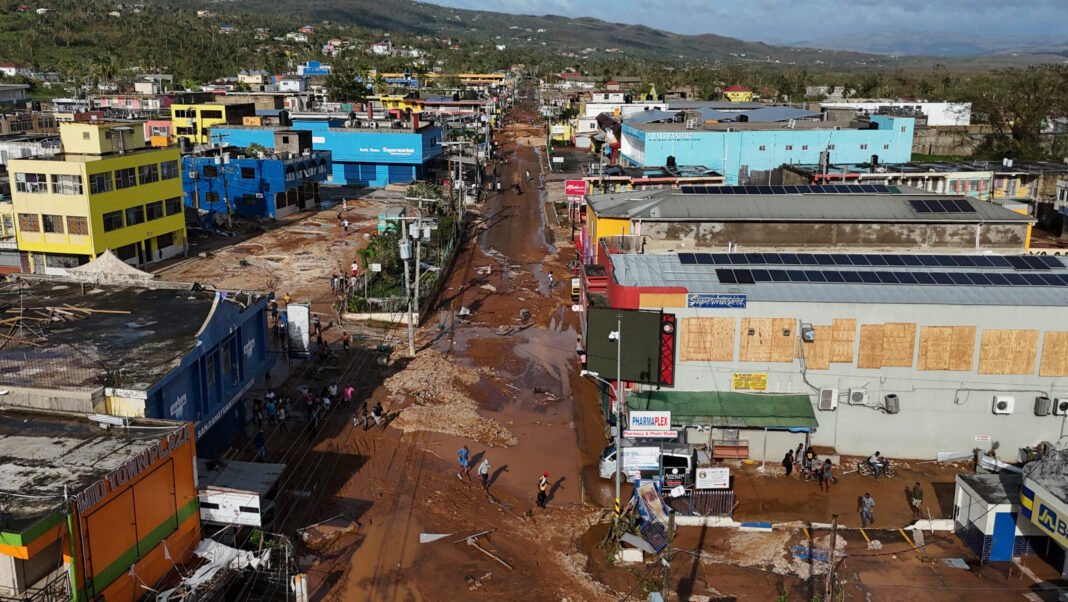The Aftermath of Hurricane Melissa: Communities in Crisis
The echoes of chain saws and the rumble of heavy machinery filled the air across the northern Caribbean on Thursday as communities attempted to recover from the devastating impact of Hurricane Melissa. This powerful storm left a trail of destruction, particularly in Jamaica, where extensive efforts were underway to restore normalcy.
Jamaica’s Struggles
In Jamaica, government workers and residents rallied to clear roadways in a bid to reach the isolated communities in the southeast that bore the brunt of one of the strongest Atlantic hurricanes on record. The devastation was palpable; residents ventured into the chaos, astonished at the sight of roofless homes and personal belongings strewn across the landscape.
Sylvester Guthrie, a resident of Lacovia in St. Elizabeth, poignantly reflected on his loss: “I don’t have a house now,” he remarked, clutching his bicycle—the only item of value left amidst the wreckage. As emergency relief flights began arriving at Jamaica’s main international airport, the urgency of the situation became clear. Officials reported that more than 13,000 residents sought refuge in shelters, with a staggering 72% of the island without power.
Amid the confusion, long lines formed at the few open gas stations and supermarkets, with citizens anxiously clinging to cash. “We understand the frustration and anxiety, but we ask for your patience,” urged Daryl Vaz, Jamaica’s telecommunications and energy minister.
Relief Efforts in Action
In the immediate aftermath, helicopters flew overhead, dropping essential supplies like food and water over the hardest-hit areas. As crews worked tirelessly to restore services, the stark reality of the storm’s impact became evident. Reports confirmed at least four fatalities in southwest Jamaica, with expectations that this number could rise.
Educational Minister Dana Morris Dixon articulated the sentiment shared by many: “The entire Jamaica is really broken because of what has happened.” As the nation grappled with this tragedy, the focus shifted to recovery, with water trucks dispatched to serve rural communities cut off from the utility system.
Cuba’s Painful Recovery
Meanwhile, in Cuba, heavy machinery began the laborious work of clearing blocked roads and highways, while military units assisted in rescuing people trapped by landslides. Remarkably, no deaths were reported in Cuba, largely due to thorough evacuation efforts that successfully relocated over 735,000 people ahead of the storm.
Residents began to return to their communities, only to find devastation awaiting them. El Cobre, near Santiago de Cuba, faced extensive wreckage. Odalys Ojeda, a local retiree, vividly described the chaos: “So much wind, so much wind. Zinc roofs were torn off. Some houses completely collapsed.” Even the Basilica of Our Lady of Charity, a revered site for many Cubans, suffered significant damage.
Reports from various provinces indicated widespread losses, including roofs, power lines, and agricultural crops. The Cuban government, in a rare move, signaled a willingness to accept humanitarian aid from the United States, a development highlighting the severity of the crisis.
The Harrowing Toll in Haiti
Hurricane Melissa’s wrath also struck Haiti, leading to catastrophic flooding and loss of life. Officials reported at least 30 fatalities, with many families devastated by the sudden nature of the storm. Laurent Saint-Cyr, president of Haiti’s transitional presidential council, expressed the collective sorrow: “It is a sad moment for the country.”
In Petit-Goâve, where the storm inflicted significant damage, personal tragedies unfolded. Steven Guadard shared his profound grief as he recounted the loss of his entire family, including four children. The plight of those displaced was echoed in the voices of many, like Michelet Dégange, who lamented, “There is no place to rest the body; we are hungry.”
The Path of Hurricane Melissa
Hurricane Melissa made landfall in Jamaica as a Category 5 storm, boasting wind speeds of 185 mph—a record for Atlantic hurricanes. By Thursday morning, the hurricane had weakened to a Category 2 storm with sustained winds nearing 105 mph. Its path took it past the southeast Bahamas, prompting evacuations and heightened fears of further destruction.
As hurricane season continues, the chilling realities for the Caribbean nations affected by Melissa underline the ongoing challenges of resilience, recovery, and support amid natural disasters.



